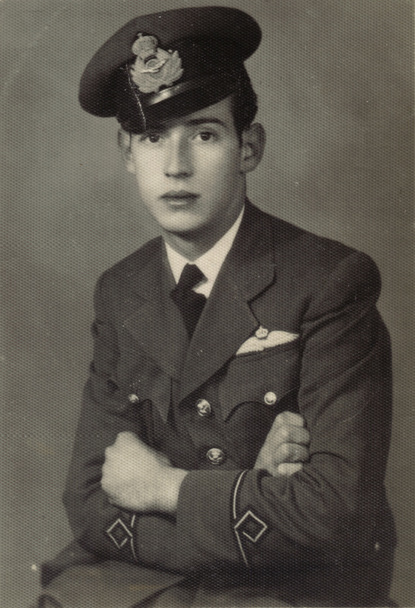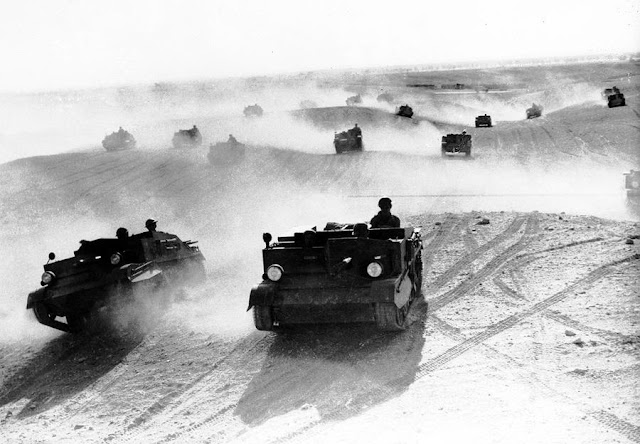Thursday 2 January 1941
 |
| Burial of victims of the Cardiff raid of 2 January 1941. |
The British offer the Greeks to send army troops to help in Albania. Already, RAF planes are operating out of airfields near Greece, but not too many British ground troops are in the country. The RAF raids Elbasan in the center of the country.
 |
| Unidentified Royal Hellenic Air Force Pilot, 2 January 1941. |
Once again, some Luftwaffe bombers go astray and bomb the Terenure district of Dublin. There are three deaths in the Shannon family, whose home is hit, with two others injured. Other counties along the Irish coast in a line stretching 100 miles to the south of Dublin also are bombed. The Germans blame the errant bombings on high winds, the British suspect a deliberate attempt to intimidate the Irish.
The Italian Aereo Italiano (CAI) stages its last raid against England, attacking Ipswich with five bombers.
RAF Bomber Command launches its own raid on Bremen, dropping incendiaries and high explosives on the German port of Bremen. About 47 bombers operate during the night. Breman is an inviting target because, being a medieval city, it burns easily. It also is packed with armaments factories (particularly a Focke-Wulf plant) and a naval base in the harbor. This is but the latest attack on the city, and, like the ones before, it is only moderately successful due to poor bombing aim.
Luftwaffe night fighters, which are somewhat ahead of their RAF counterparts, continue to confront the RAF bombers. Both Uffz. Arnold (1,/NJG 2) and Lt. Hans Hahn (3,/NJG 2) score victories, a Wellington and a Whitley, respectively.
 |
| "Fleet Air Arm pilots and observers, 2 January 1941, onboard HMS Victorious at Scapa." "Left to right: Sub Lieut (A) A Mc D Garland, a fighter pilot attached to 809 Squadron; Sub Lieut (A) F Rabone, an Observer in a Fairey Albacore; Sub Lieut (A) W H G Browne, an Observer attached to 832 Squadron." © IWM (A 6931). |
U-65 (Kptlt. Hans-Gerrit von Stockhausen), nearing the end of its extended cruise which began in October, sends a torpedo into 6,579-ton British transport Nalgora about 650 km north of the Cape Verde Islands. The Nalgora is taking men and supplies to General Wavell's Middle East Command. Since the freighter takes its time sinking, the U-boat finally surfaces and finishes it off with the deck gun. All 105 men on board survive, but they all spend over a week in lifeboats. This is U-65's final victory on this epic and highly successful (8 ships of 47,800 tons sunk) patrol, for which Stockhausen will be promoted to Korvettenkapitän and awarded the Knight's Cross. It also is his final victory, as he leaves U-65 after this and takes command of the new 26th U-boat Flotilla.
U-38 (Kptlt. Heinrich Liebe), on its eighth patrol, is operating in the sea lanes about 300 miles (450 km) northwest of Ireland when it is attacked by Royal Navy ships with depth charges. U-38 survives the attack with minor damage that does not interfere with its patrol.
During the Luftwaffe's attack on Cardiff after dark, a delayed action bomb falls on the 5252-ton British freighter Loch Dee. The bomb explodes early on the 3d and kills a crewman.
The Royal Navy 1st Minelaying Squadron sets off to lay minefields SN 6 and SN 65 in the North Sea. This is a major operation, covered by HMS Hood and other warships. Meanwhile, minelaying cruiser HMS Adventure lays minefield ZME 10 in St. George's Channel.
In the South Atlantic, German tanker Nordmark refuels raider Thor.
Convoy SC 18 departs from Halifax, Convoy HX 98/1 departs from Sydney, Cape Breton, Nova Scotia to Liverpool/Belfast.
Royal Navy trawler HMS Saragande (Skipper Laurence F. Scarlett) is commissioned.
U-66 is commissioned.
U-174, U-462, U-707, and U-762 laid down.
US submarine USS Tuna (Lt. Commander John J. Crane) is commissioned.
 |
| British infantrymen outside Bardia, January 1941 (AP Photo). |
Offshore during the day, British monitor HMS Terror, gunboats HMS Ladybird and Aphis, destroyer HMS Dainty and Australian destroyer HMAS Voyager bombard Bardia. The Italians stage an unsuccessful air raid against the ships. The RAF (RAF Nos. 70 and 216 Squadrons) stages its second massive attack on the fortress in a row, dropping 30,000 tons of ordnance. The Royal Navy's Mediterranean Fleet under Admiral Cunningham sorties from Alexandria to support the land operation.
The Luftwaffe is shifting planes to the Mediterranean, but they will not be there in time to affect present operations.
Italian 2364 ton freighter Albano hits a mine and sinks just east of Cape Laghi, Albania.
 |
| HMS Ladybird shelling Bardia. That is a 6-inch 50-caliber Mk XIII gun. 2 Jan 1941 (Australian War Memorial). |
Separately, Foreign Secretary Anthony Eden informs Free French leader Charles de Gaulle of the arrest of Vice-Admiral Muselier on the 1st. De Gaulle does not believe that Muselier, his commander of Free French naval forces, is a traitor, and suspects a plot by the British to discredit him.
In addition, the Luftwaffe attacks on Ireland recently are fueling British suspicions that the Germans may be using these attacks as a pretext to deposit agents there in order to spy on Royal Navy fleet movements.
Soviet Military: The Soviets being a major War Games exercise, with troops simulating an attack in the "northwest" direction, i.e., toward Stalingrad and Moscow. General Georgy Zhukov commands the attacking forces, i.e., the "Western/Blue" forces against "Eastern/Red" forces commanded by Colonel General D.G. Pavlov. This exercise will continue for the remainder of the week (accounts vary on exactly what happened with these exercises, but it is clear that war games were held). The assumption built into the exercise is that the "Eastern Forces" have a large numerical advantage and that hostility is initiated by the "Western/Blue" forces. This is a clear anticipation of an attack by the Wehrmacht.
Vichy French Government: Banker Paul Baudouin resigns from the government. He has been the Vichy French Minister of Foreign Affairs since June and also briefly the Minister of Information (propaganda minister). It was he who initiated the communications with German, via the Spanish Ambassador, that led to the Armistice. Baudoin is a somewhat shadowy figure of mixed loyalties, a Monarchist who at some points in time is considered by Marshal Pétain to be his preferred successor. Baudouin was among those who pressured the Premier to excise Pierre Laval from the government. It is unclear exactly why Baudouin resigns at this time, but there are intense power struggles going on in French politics on both sides of the English Channel between Left and Right. To what extent Baudouin is an advocate of collaboration is unclear, but that is what he eventually is charged with (and convicted of) despite leaving the government at this early juncture. He returns to private banking.
 |
| Troops in Palacios, Texas, 2 January 1941 (Historic Palacios Photos). |
- Category I: prisoners "definitely capable of being reformed," to be held at Dachau, Sachsenhausen, Auschwitz I;
- Category Ia: "old prisoners" to be held at Dachau;
- Category II: prisoners facing "strong accusations" but still capable of reform, to be held at Buchenwald, Flossenburg, and Auschwitz II;
- Category III: "asocial" prisoners with criminal convictions and "virtually incapable of correction," to be held at Mauthausen.
Future inmates will be accorded a certain classification upon forwarding to the system, but, especially as the war progresses, assignment to any of the camps will be a death sentence and the categorizations essentially meaningless. Heydrich does require that recommendations for Category III prisoners be "justified" based upon previous convictions and related factors. It is unclear how many - if any - inmates at any of the camps are ever "reformed" sufficiently to exit the system altogether.
 |
| Bren gun carriers of the Australian Light Cavalry in the North African desert, January 1941 (AP Photo). |
American Homefront: The singing Andrews Sisters (Maxene, Patty, and LaVerne) record iconic "Boogie Woogie Bugle Boy" (written by Don Raye and Hughie Prince) at Decca's Hollywood Studios. Beyond its initial success, the tune goes on to become ranked No. 6 on the Songs of the Century list compiled by the Recording Industry Association of America (RIAA), the National Endowment for the Arts, and Scholastic Inc. The song is recorded during the latter stages of the filming of Abbott and Costello film "Buck Privates." The song's introduction during that film featuring the Andrews Sisters is considered by many to be a classic music video (and arguably one of the first, though there's a lot of competition for that title).
"Boogie Woogie Bugle Boy" was nominated that year for an Academy Award for Best Song. It lost out to "The Last Time I Saw Paris" in "Lady Be Good." If you want to talk about ridiculous Academy decisions, start here. Hollywood was very traditional with its song awards in those days, and perhaps the voters felt that "Boogie Woogie Bugle Boy" was a bit too "modern" compared with the "Paris" ballad. Plus, comedies did not get too much respect in those days (and still don't).
The song has been covered by other artists, most notably by Bette Midler in 1972 (produced by Barry Manilow) to great acclaim. Midler originally intended it as a "B" side to another song. However, her rendition of "Boogie Woogie Bugle Boy" was so good that radio stations played "Boogie Woogie Bugle Boy" on the flip side instead of the intended single, and it hit No. 1 on the Billboard easy listening chart 42 years after the song's introduction. Christina Aguilera copied the style of the Andrews Sisters' performance of this song in "Buck Privates" for one of her most successful music videos. More than any other of their songs, this one made the Andrews Sisters enduring legends, and "Buck Privates" made Abbott and Costello film stars.
Below is a 1941 live performance of the song (a "V-Disc") for the Special Service Division. It has some very shaky camera work (changing lenses mid-song was not a good idea) but is an excellent rendition nonetheless. One of the top-two enduring classics of the World War II-era (kudos if you can name the other, I guarantee that you know it but it's not a Glenn Miller tune).
Okay, first, a promotional performance by the Andrew Sisters for the US military of "Boogie Woogie Bugle Boy."
And second, here is the version from "Buck Privates."
January 1941
January 1, 1941: Muselier ArrestedJanuary 2, 1941: Camp Categories
January 3, 1941: Liberty Ships
January 4, 1941: Aussies Take Bardia
January 5, 1941: Amy Johnson Perishes
January 6, 1941: Four Freedoms
January 7, 1941: Pearl Harbor Plans
January 8, 1941: Billions For Defense
January 9, 1941: Lancasters
January 10, 1941: Malta Convoy Devastation
January 11, 1941: Murzuk Raid
January 12, 1941: Operation Rhubarb
January 13, 1941: Plymouth Blitzed
January 14, 1941: V for Victory
January 15, 1941: Haile Selassie Returns
January 16, 1941: Illustrious Blitz
January 17, 1941: Koh Chang Battle
January 18, 1941: Luftwaffe Pounds Malta
January 19, 1941: East African Campaign Begins
January 20, 1941: Roosevelt 3rd Term
January 21, 1941: Attack on Tobruk
January 22, 1941: Tobruk Falls
January 23, 1941: Pogrom in Bucharest
January 24, 1941: Tank Battle in Libya
January 25, 1941: Panjiayu Tragedy
January 26, 1941: Churchill Working Hard
January 27, 1941: Grew's Warning
January 28, 1941: Ho Chi Minh Returns
January 29, 1941: US Military Parley With Great Britain
January 30, 1941: Derna Taken
January 31, 1941: LRDG Battered
2020
No comments:
Post a Comment